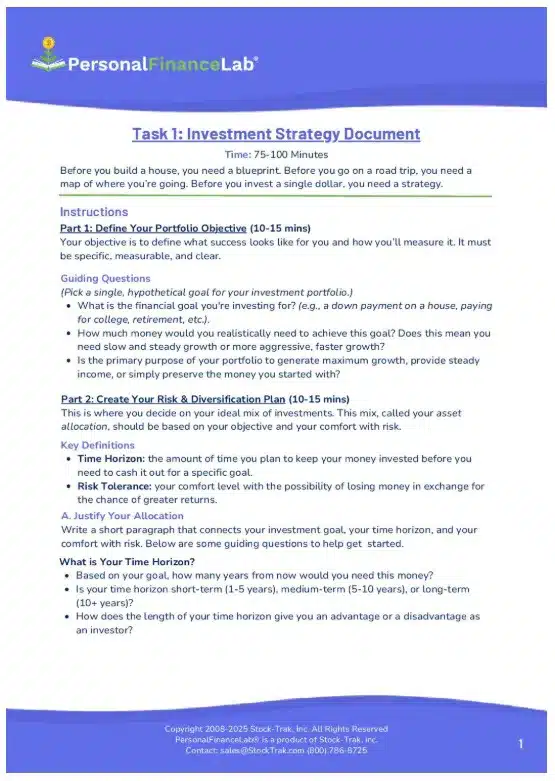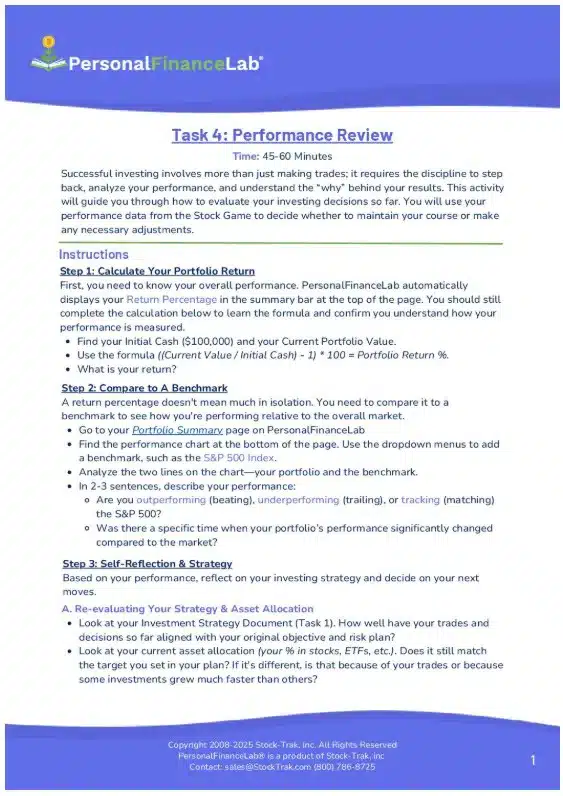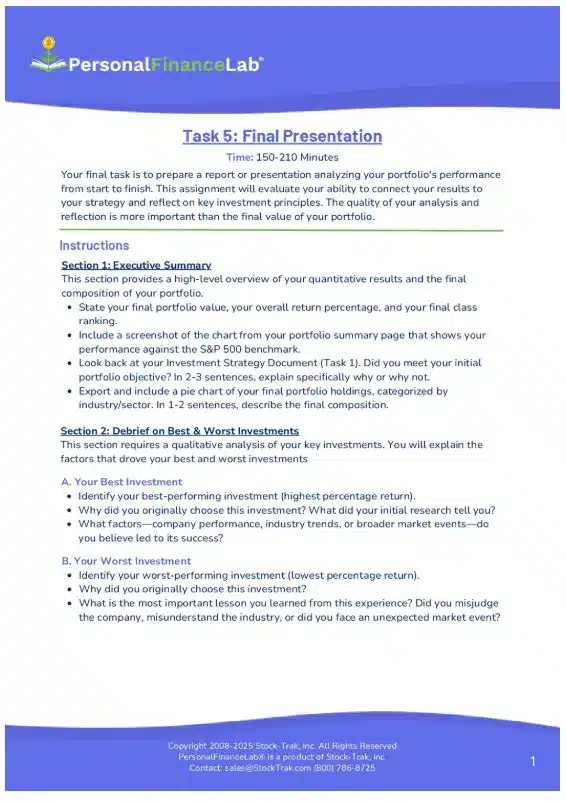
Implementation Plan
Download PDF
Given the total time commitment, this task is best broken into two parts: an in-class conceptual session and a research-focused homework assignment. Alternatively, you can break this up into two class sessions if you prefer students complete all work in class.
Session 1: The Conceptual Foundation (35-40 mins)
- Introduction (5 min): Hand out the activity sheet. Introduce the “blueprint” analogy and emphasize that this document will guide all their future decisions.
- Guided Work Time (30 min): Have students focus on completing Part 1 (Objective) and Part 2 (Risk & Diversification Plan). These sections are about the “big ideas” and are best completed in the classroom where you can answer questions about time horizon, risk, and strategy.
- Q&A and Individual Study (5-10 min): Review the requirements for Part 3. Explain that this next step involves research and calculation, making it ideal for individual study.
Session 2: Research and Calculations (55-60 mins)
Students will work independently to complete Part 3. This allows them the flexibility to explore the research tools on PersonalFinanceLab, find investments that interest them, and complete all the calculations and placing their first trades. The final document is due at the start of the next relevant class period.
Final Student Deliverable
Students will submit a completed document that includes their Portfolio Objective, Target Asset Allocation table, Justification Paragraph, and a list of their initial trades with rationales.
Student Instructions
1. Define a Portfolio Objective:
Students will articulate a specific and measurable goal for their investment portfolio (e.g., saving for a specific purpose, achieving a target growth rate, etc.).
2. Create a Risk & Diversification Plan:
- Students are introduced to the key concepts of Time Horizon and Risk Tolerance.
- They write a justification paragraph connecting their personal goal, time horizon, and risk tolerance.
- They complete a Target Asset Allocation table, assigning percentages of their portfolio to different asset types (Stocks, ETFs, Bonds, etc.).
3. Plan the First Trades:
- Students identify their first 2-5 investments and write a brief rationale for each, explaining how it aligns with their strategy.
- The worksheet then guides them through the practical math of executing a trade:
- Step 1: Calculate the dollar amount to invest in a specific asset based on their target allocation.
- Step 2: Look up the asset’s current price.
- Step 3: Calculate the number of shares they can afford, rounding down to the nearest whole number.




